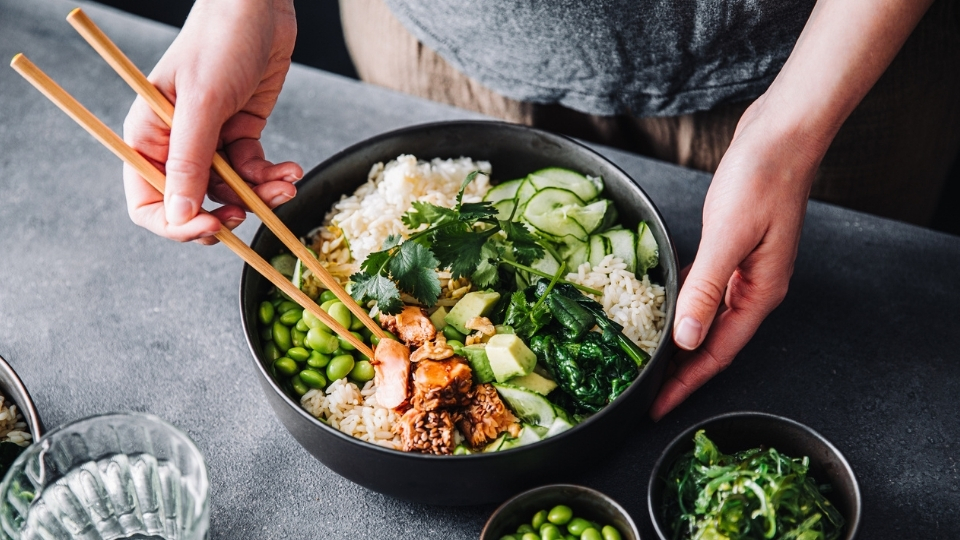
With numerous daily stressors, it can be challenging to ensure your body receives the proper nutrition it needs to function correctly. One unhealthy snack turns into two, and suddenly, your body starts to feel less capable of tackling vital challenges without discomfort.
Take control of your life by adopting healthier eating habits. Here’s how you can get more fibre into your diet every day:
Soluble vs insoluble fibre
There are two main types of fibre — soluble and insoluble. Both can help alleviate constipation, which can be an added inconvenience on an already busy day, and are important for your health.
Soluble fibre is unique because it can break down in liquid, unlike insoluble fibre. By slowing the breakdown of sugar, it can help you gain a better handle on controlling your blood sugar. You may also notice an improvement in digestive health. This roughage is found in many fruits, nuts and some veggies.
Insoluble fibre adds a speed element to your digestive system, and these faster-working fibres offer significant benefits for individuals who experience frequent bowel issues. Insoluble fibre can be found in veggies, whole grains and other forms of wheat.
Everyday foods to boost fibre
It can be tempting to grab chips and relax after a long shift. However, it can be easy to find ways to incorporate healthier food choices and swap out roughage-deficient snacks.
Seek healthier alternatives to satisfy cravings. Next time you desire something sweet, consider berries or yoghurt rather than cookies or cake. Unlike overly sugary desserts, berries boost your roughage intake and satisfy your sweet tooth. You can enjoy strawberries or blackberries as is, or you can add them to a salad for a sweetened touch or a delicious fruit smoothie.
For a quick and easy soluble fibre swap, consider substituting the foundation of a dinner dish with a soluble fibre-rich option. For example, rice is a common ingredient in many homey or restaurant meals. Don’t worry — you don’t have to skip the rice. Consider swapping the white rice for brown rice to increase fibre without sacrificing taste.
Smart strategies for busy schedules
Changing your diet is a big step. Use this time to get creative in the kitchen. Increase fibre by about five grams daily to help prevent stomach discomfort.
Consider fibre when restocking your kitchen. Each piece of produce or snack should be purchased to improve your overall wellbeing. Having healthier, fibreous foods in the home can encourage you to build healthier eating habits.
To make fibre switches even easier, consider personalised meal prepping strategies on your day off. Be particular about each item you put into your bag for break time — don’t just throw something together before walking out the door.
How much fibre do you really need?
Don’t assume that just because your fibre intake is low, you’re falling behind. Only about 7 per cent of people meet fibre recommendations, but consuming more fibre can help you avoid the risk of diabetes and heart disease.
Introduce the idea of fine-tuning your eating habits with simple additions to your daily routine. Try to eat three servings of vegetables to meet the recommended daily intake of roughage. Start small and notice how your body starts to adapt to new patterns for the better.
Your next steps to a healthier, happier you
Looking for ways to modify your fibre intake puts you on the right path toward better health and overall wellbeing. Take steps to experiment with your eating habits and focus on your health.
We have a request
SHE DEFINED’s journalism is independent and we’re committed to elevating the voices of women by putting them front-and-centre in our stories and giving them a platform to speak up.
Quality journalism and editorial content takes time, money and resources to create, which is why your support matters. We don’t have a paywall or exclusive subscriptions because we believe in keeping our stories open to everyone.
Help support our mission by making a financial contribution today.

Mia Barnes
This article was written by Mia Barnes.
Mia is a freelance writer and researcher who specialises in women’s health and lifestyle. Mia is also the Founder and Editor-in-Chief of Body+Mind Magazine.
Follow Mia and Body+Mind on Twitter.






